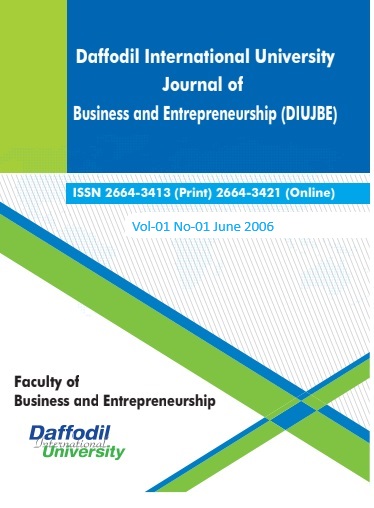The Serial Cartel:
A Mathematical Model of Taxicab Services Market
DOI:
https://doi.org/10.36481/diujbe.v01i.q7rrmv76Keywords:
Services Market, Taxicab Services, Transportation Economics, Service OptimizationAbstract
In many developing countries and in some small cities in many developed countries, we find taxicabs without meters. These taxicab drivers sometimes form a cartel to avoid competition among themselves. They stand in a queue serially one by one. Only the first driver in the queue can pick up a passenger. The second driver will wait until the first driver leaves the queue. That is, these taxicab operators offer their services serially one by one. They are free to quote any price for a trip they want and can wait as long as they want to get an acceptable passenger. But if they wait, they incur a waiting cost. If a driver quotes a price and the passenger does not accept it and leaves the market or waits for the next cab, then the driver has to wait to get another passenger and as a result, his waiting cost increases. Such a cartel can be best described as a Serial Cartel. A serial cartel can be of two types on the basis of its continuity: (1) Discontinuous Serial Cartel, and (2) Continuous Serial Cartel. Discontinuous serial cartels are formed where demand is temporary. On the other hand, continuous serial cartels are formed where demand is permanent. These serial cartels have many features which are not present in other forms of cartels available in the existing literature. This paper presents two models of serial cartels of taxicab services market ⎯ one is a Discontinuous Serial Cartel Model, and the other one is a Continuous Serial Cartel Model. The two models are based on some plausible assumptions and two hypotheses about the willingness of passengers to pay for taxicab services. The models use differentiable negative exponential probability distribution functions to measure the willingness of the passengers. It is found that the equilibrium price, supply function, optimal size of a serial cartel, entry decision of a driver, and welfare effects of these serial cartels are totally different from the basic features of the centralized and market sharing cartels

